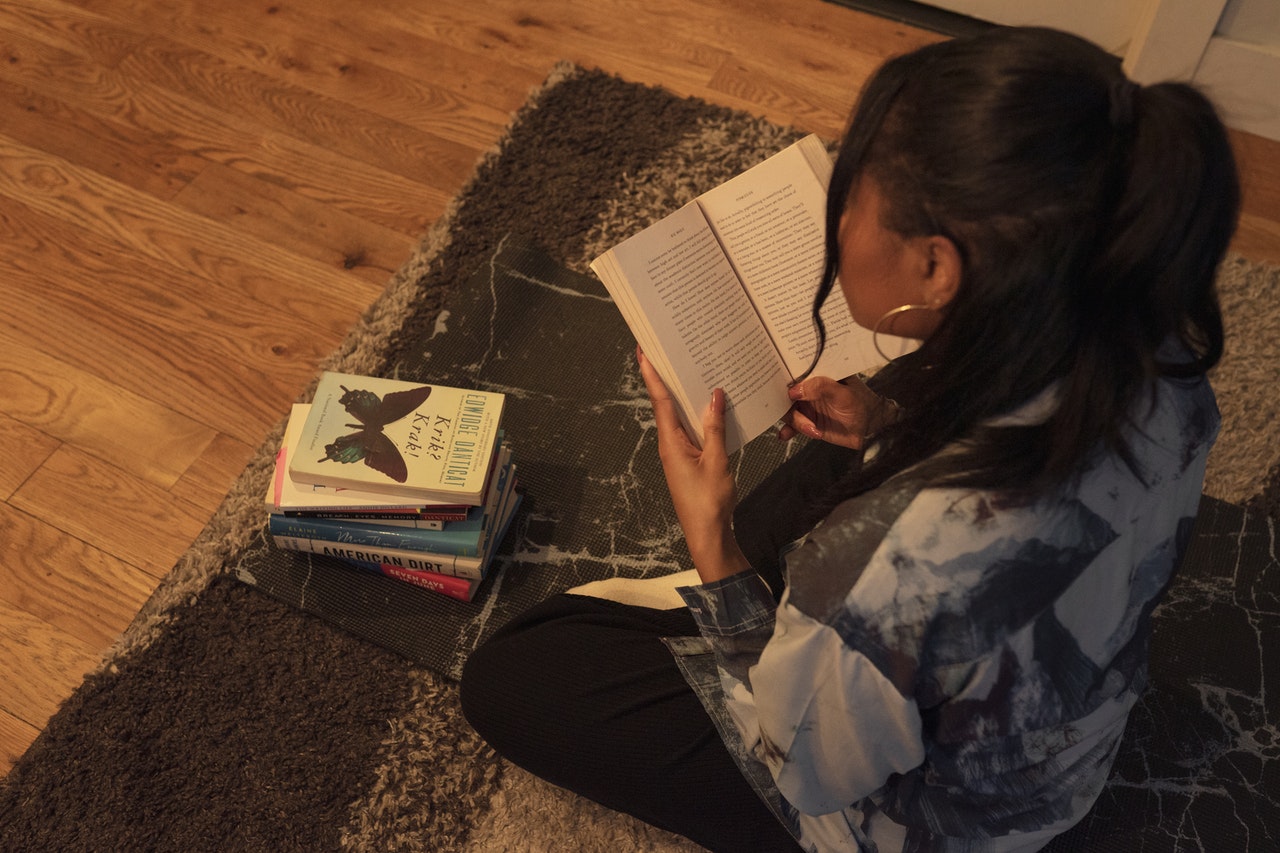Structured in six parts, the novel tells the story of Klara, a unique B2 robot designed to take care of children and teenagers. Klara belongs to a series of androids called Artificial Friends (AF), responsible for accompanying and caring for the youngest members of the family. In this sense, Klara is a particularly sensitive and emotional Artificial Intelligence, ready to unravel the feelings, reactions, and moods of human beings.

The novel begins in a technology store dedicated to the sale of the latest generation of robots. There, Klara waits for someone to notice and acquire her. From the display window, she contemplates the outside and observes with great curiosity the daily life of the passers-by, their gestures, their impulses, and their outbursts.
“Klara has so many unique qualities, we could be here all morning. But if I had to emphasize just one, well, it would have to be her appetite for observing and learning”, says the store manager with a certain pride. As it happens, Klara possesses the ability of empathetic observation and therefore asks questions that most of her peers would never even glimpse.
Klara believes in the Sun, just as many believe in a religion.
From the store window, Klara also begins to develop a beautiful bond with the Sun. Since the AF runs on solar energy, she considers the star to be an omnipotent being, a benevolent and nurturing force capable of invigorating anyone in need. Klara believes in the Sun, just as many believe in a religion.
Ishiguro’s fiction is written in the first person, and the narrator is Klara. This technique by the author allows the reader to observe the world through the eyes of a mechanical consciousness. Although this narrative decision seems limiting, Klara’s perception is at all times intelligent, delicate, and sharp.
In the first part of the book, Klara is acquired by the Arthur family. The android’s apparent purpose is to care for Josie, a fourteen-year-old girl with a degenerative disease, and keep her company. It should be noted that, even though the reader may long to find out what condition the girl has, the novel does not reveal too many details. The only certainty to which the reader can cling is that something very serious is happening to Josie that could be fatal.
After leaving the store, Klara comes into contact with domestic life for the first time. There, she discovers human attributes that she finds contradictory, fascinating and disturbing. Klara will learn to coexist with Josie, her mother, and the housekeeper. In this family environment, the mother, Chrissy, serves as the head of the household. The housekeeper, Melania, takes care of the daily chores and watches over the girl with devotion. Josie, as expected, is the heart of the place.
Almost immediately after her arrival, Klara meets Josie’s best friend, Rick. The teenager is an enthusiastic drone designer and a loyal accomplice. Soon, it becomes clear that Josie and Rick have made important promises to each other for the future. However, between the young friends there are differences in living standards and education that threaten their plans.
As Klara interacts with the Arthur family and Rick, she gains awareness about human impulses, existential dilemmas, and the nature of the heart. Because the android is especially perceptive to human interactions, she begins to delve into the ambivalence of some of the moods experienced in the household. At one point, Klara declares “I believe I have many feelings. The more I observe, the more feelings become available to me”.
Throughout the book, the writer seems to argue that artificial intelligence could come to sense a range of emotions.
Suddenly, the novel takes a profoundly unexpected turn and a delicate truth is revealed: faced with Josie’s possible death, the mother has planned to create an android model of the teenager in order to have a kind of substitute.
If the time comes, Chrissy, with the help of Mr. Capaldi, will transfer Klara’s consciousness to a humanoid replica of her daughter. The desperate mother considers an artificial model of Josie to be a better alternative than facing life on her own. Klara, determined to help however she can, accepts the proposal to become Josie.
However, Klara undertakes her own plan to save the young girl’s life. The robot makes a curious pact with the Sun and bravely sets out to sacrifice a part of herself as an offering. If anything is clear in the book, it is that, although Klara is an Artificial Friend, her friendship and her sensitivity are not one iota artificial. In her own way, Klara loves Josie, and the author makes it clear that a mechanical entity can harbor feelings and can develop an inner world of its own.
Klara and the Sun is set in a time not fully revealed. Ishiguro proposes a speculative future, similar to the one we know today, but with marked technological and social distinctions. In this context, the working classes have been largely replaced by all kinds of machines. The novel explores a new social order in which they implement peculiar and shady practices, such as: “child genetic modifications”, “screen teachers”, “interaction meetings”, and Artificial Friends to alleviate loneliness.
Society has become so competitive that it has chosen to redesign and optimize kids
The author presents a world in which children are home-schooled by “screen teachers” and parents take unthinkable risks in pursuit of genetic perfection for their children. In this respect, society has become so competitive that it has chosen to redesign and optimize kids. Affluent families have a tradition of subjecting their descendents to dangerous genetic procedures in order to boost their academic performance and increase their employment prospects. In short, the technologically “lifted” children will be entitled to all kinds of privileges. However, those who are not “lifted” will be disadvantaged and marginalized in a system that will prevent them from progressing.
In Ishiguro’s fiction, certain issues remain unresolved. The reader never knows for sure how some things work in this polluted and classist world. However, it is precisely this kind of mystery that captivates from the beginning of the book.
Kazuo Ishiguro has used a science fiction lens to reflect on deep themes, such as loneliness, isolation, expiration, obsolescence, and the emotional behavior of human beings
On this occasion, Kazuo Ishiguro has used a science fiction lens to reflect on deep themes, such as loneliness, isolation, expiration, obsolescence, and the emotional behavior of human beings. In a way, the writer warns of the possibilities of a near future in which technology displaces workers. Klara and the Sun is a lucid and disturbing novel, essential like all of Kazuo Ishiguro’s works.
About the author
Kazuo Ishiguro’s books have been widely translated and have earned him countless distinctions around the world. In recent years, the Japanese-born British writer has received awards with connotations of lifetime achievement, including: The Peggy V. Helmrich Award (2013), The Library Lion Medal from New York Public Library (2014), The Sunday Times Distinguished Author Award (2014), as well as The Golden Plate from the American Academy of Achievement (2017).
In 2017, Kazuo Ishiguro was awarded the Nobel Prize in Literature and was characterized by the Swedish Academy as “a mixture of Jane Austen and Franz Kafka”.
Image credit: @Planetnehemiah

